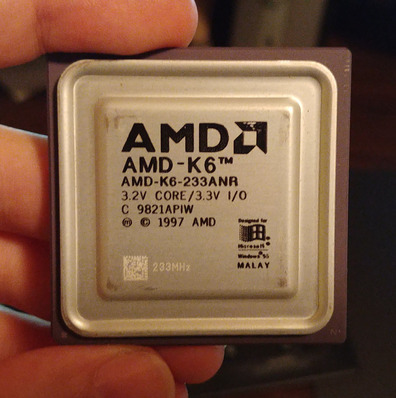First post, by Kahenraz
- Rank
- l33t
I have a Socket 7 motherboard with an AMD K6 233mhz which is label says should run at 3.2/3.3v. The silkscreen on the motherboard is difficult to read as to which option the jumper is set to but I am reading about 2.8v on the linear regulator.
I'm having trouble understanding whether VR or VRE should be chosen based on the voltage of the CPU. I'm also not finding any reference as to why the output is 2.8v. Is the jumper set wrong?
Another thing that I'm curious about is whether supplying 2.8v instead of 3.3v makes the CPU run cooler by undervoting it.
